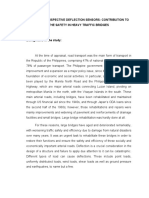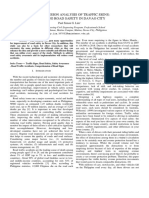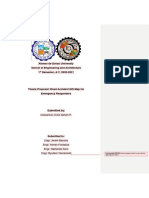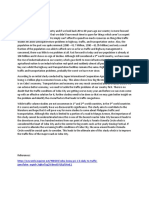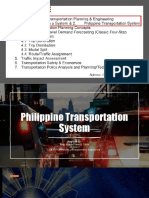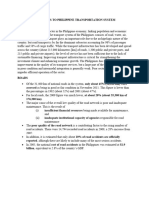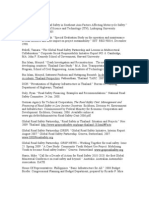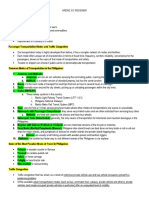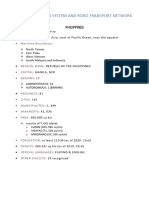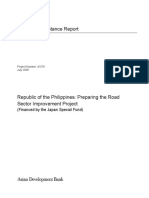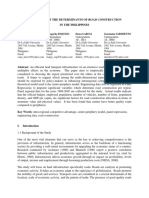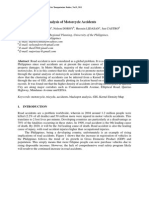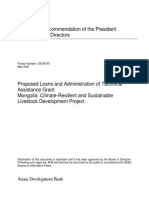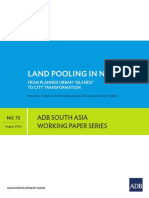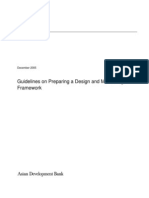0% found this document useful (0 votes)
68 views3 pagesBackground of The Study
The document discusses the aging infrastructure of bridges in the Philippines and the need for rehabilitation. It notes that major arterial roads and bridges connecting various islands have deteriorated over many years. Road accidents are a serious problem in the Philippines, with the national cost estimated at $1.9 billion in 2005, equivalent to 2.8% of GDP. Rapid urbanization will further strain transportation systems unless infrastructure is improved.
Uploaded by
Claudine D. SaldeCopyright
© © All Rights Reserved
We take content rights seriously. If you suspect this is your content, claim it here.
Available Formats
Download as DOCX, PDF, TXT or read online on Scribd
0% found this document useful (0 votes)
68 views3 pagesBackground of The Study
The document discusses the aging infrastructure of bridges in the Philippines and the need for rehabilitation. It notes that major arterial roads and bridges connecting various islands have deteriorated over many years. Road accidents are a serious problem in the Philippines, with the national cost estimated at $1.9 billion in 2005, equivalent to 2.8% of GDP. Rapid urbanization will further strain transportation systems unless infrastructure is improved.
Uploaded by
Claudine D. SaldeCopyright
© © All Rights Reserved
We take content rights seriously. If you suspect this is your content, claim it here.
Available Formats
Download as DOCX, PDF, TXT or read online on Scribd
/ 3
